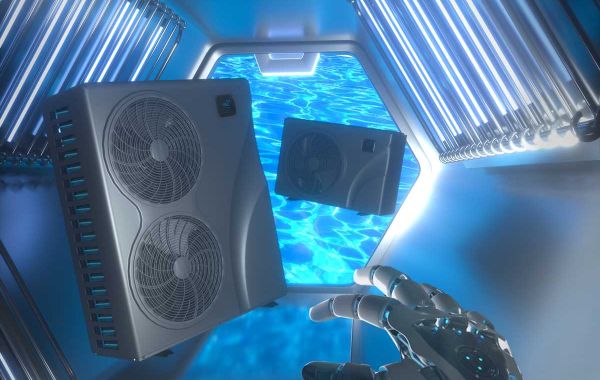When you're lounging on a pool float, sipping a cool drink and soaking up the sun, you're probably not thinking about the science behind the experience. But understanding the physics of buoyancy and stability can help you appreciate the design of your pool float and enhance your enjoyment of it. In this blog post, we'll explore the science of pool floats, from the principles of buoyancy and stability to the factors that determine the float's design and performance.
Buoyancy: The Force that Keeps You Afloat
Buoyancy is the upward force exerted by a fluid (in this case, water) on an object immersed in it. The force is proportional to the volume of the displaced fluid and acts in the opposite direction to gravity. When you lie on a pool float, you displace a certain volume of water, which exerts an upward force on you. The force must be equal to your weight in order for you to remain afloat. If the force is greater than your weight, you will float; if it is less, you will sink.
The buoyancy of a pool float depends on its density and volume. Density is the amount of mass per unit of volume, and is determined by the materials used to construct the float. Most pool floats are made of plastic, vinyl, or foam, which are less dense than water. This means that a float displaces more water than it weighs, resulting in a net upward force. The greater the volume of the float, the greater the buoyancy.
Stability: Keeping You Balanced on the Water
Stability is the ability of an object to maintain its equilibrium when subjected to external forces. In the case of a pool float, the external forces include waves, wind, and the movements of the person or people on the float. A stable float is one that remains level and balanced on the water, even when subjected to these forces.
The stability of a pool float depends on its center of gravity, which is the point where the weight of the float is concentrated. A float with a low center of gravity is more stable than one with a high center of gravity, because the weight is distributed closer to the water's surface. A wide base also increases stability, as it provides a larger area for the float to rest on.
Design and Performance: Balancing Buoyancy and Stability
The design of a pool float is a delicate balance between buoyancy and stability. A float that is too buoyant will be unstable, as it will tend to tip over easily. A float that is too stable will be difficult to maneuver and may not provide enough support to keep you afloat. The ideal pool float is one that has enough buoyancy to keep you afloat, but is stable enough to prevent tipping and rocking.
The shape of a pool float also affects its performance. A flat float with a large surface area will provide more buoyancy than a narrow, tapered float. However, a flat float may be less stable than a curved or contoured float, as it has less surface area in contact with the water. Some floats are designed with curved or contoured shapes to provide both buoyancy and stability.
In addition to shape, the materials used to construct a pool float can also affect its performance. Foam floats are soft and comfortable, but may not provide as much buoyancy as plastic or vinyl floats. Inflatable floats can be adjusted for different levels of buoyancy, but may be less stable than solid floats. The size and weight of the float also play a role in its performance, as larger and heavier floats may be more stable but harder to maneuver.
The Science of Pool Floats
When you're lounging on a pool float, it's easy to forget about the science behind the experience. But understanding the principles of buoy ancy and stability can help you appreciate the design and performance of your float. By understanding how the materials, shape, and size of your float affect its buoyancy and stability, you can choose a float that is best suited to your needs and preferences.
Of course, the science of pool floats is just one aspect of the fun and relaxation they provide. Whether you're floating solo or with friends, reading a book or sipping a drink, there's nothing quite like the feeling of weightlessness and freedom that comes with a day spent on the water. So next time you're lounging on your pool float, take a moment to appreciate the physics that make it all possible. And then relax, and let the water carry you away.
Pool Heat Pumps: The Perfect Companion for Pool Floats
Continuing on from the science of pool floats, another important element to consider when enjoying your pool is the temperature. While pool floats provide a comfortable and relaxing way to float on the water, a pool heat pump can help maintain the perfect water temperature for swimming and other water activities.
One of the benefits of using a pool heat pump is that it allows you to extend your swimming season. Even if the air temperature is cooler, the heat pump can still extract enough warmth from the air to heat the pool water. This means you can enjoy your pool and pool floats for more months out of the year.
Enhancing Your Pool Experience: The Science of Pool Floats and Technology of Pool Heat Pumps
Pool floats provide a fun and relaxing way to enjoy your pool, while a pool heat pump can help maintain the perfect water temperature for swimming and other water activities. By understanding the science behind pool floats and the technology behind pool heat pumps, you can create the ultimate pool experience for yourself and your family. So, whether you're floating on a pool float or diving into the refreshing water, make sure to take advantage of the latest pool technology to enhance your enjoyment of this classic summer activity.
Zealux pool heat pumps are designed to keep your swimming pool water warm and comfortable, regardless of the weather outside. While the Zealux heat pump with Inverboost technology is essential for creating an enjoyable swimming experience, it's not the only factor that affects your enjoyment of the pool. Another key element is the pool float. When you're floating on a pool float, you're likely not thinking about the science behind it, but understanding the physics of buoyancy and stability can enhance your appreciation of the design and performance of your pool float.
In addition to extending your swimming season, pool heat pumps can also help you save on energy costs. While the initial cost of a heat pump may be higher than that of a gas heater, heat pumps are more energy-efficient and can save you money in the long run. They can also be used with a solar cover, which helps to retain heat and further reduce energy usage.
Pool floats and pool heat pumps are two key elements that can enhance your pool experience. Understanding the science of buoyancy and stability can help you appreciate the design and performance of your pool float, while a good pool heat pump provided by pool heat pump suppliers can allow you to enjoy your pool and floats for more months out of the year. Whether you prefer to float solo or with friends, or whether you like to relax in a heated pool, the combination of pool floats and a heat pump can provide you with the perfect oasis for relaxation and enjoyment.
Tag: heat pump wholesalers, pool heat pump brands, small pool heater, air to water manufacturer, heat pump suppliers, air source heat pump

 pool heater
pool heater





